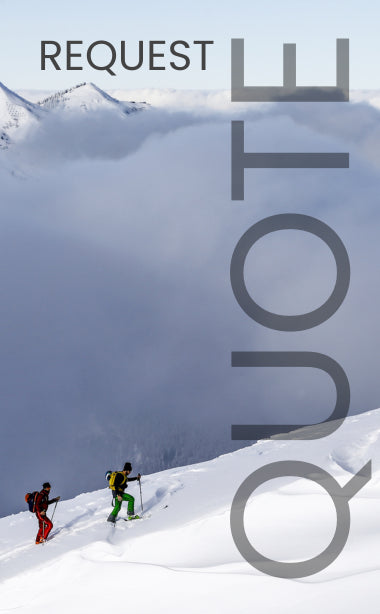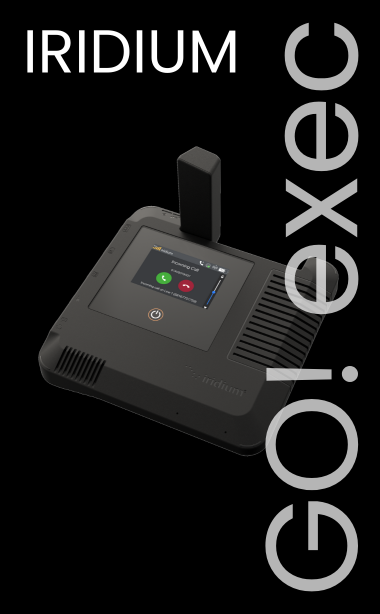You have no items in your shopping cart.
Here at Outfitter Satellite, we provide satellite phone and mobile communication equipment solutions to many different people: sailors, remote oilfield and oil rig workers, hunters, geologists, and alpinists, among plenty of others with varying professions and passions. What do all of these folks have in common? Well, they all spend a great deal of time in remote areas of the world that lack any type of cell coverage. They rely on satellite phone companies and sat phone rentals to help them stay connected to people that are hundreds or even thousands of miles away.
Your Line Of Communication, Anytime, Anywhere
Outfitter Satellite is proud to be the world’s foremost satellite phone provider. As an authorized Iridium PTT Reseller and Marlink Elite Partner, we happily provide mobile communication services for those who are on-the-go, camping in or near their vehicles, or even those who need land-portable friendly solutions.
To get connected with any of the popular satellite phone brands that we carry, please visit any of the links below:
And more!
Due to the fact that many of our satellite phone users are wilderness explorers and mountaineers who feel compelled to conquer mountains and tackle what’s known as the “Seven Summits,” we’re going to take a look at the highest peak on each of the Earth’s seven continents.
If you have any questions about exploring and climbing these mountains, we can’t really help you there — but if you have any inquiries about our satellite phones for rent or satellite phones for sale, we’re only (ironically) one click or call away. Let’s get started!
North America
Denali (Mount McKinley)
Denali, sometimes referred by its former name, Mount McKinley, stands at a massive 20,310 feet above sea level. Denali is located in the Alaska Range of Alaska (a rather fitting name for a mountain range), and if (or when) you see this peak in person, you will certainly be blown away by its sheer prominence (i.e. a mountain’s summit or highest point relative to the next lowest counter line).
To no surprise, Denali is an extremely technical and challenging mountain to summit, though the first ascent for Denali was back on June 7th, 1913.
South America
Aconcagua
The Andes mountain range of South America certainly does not disappoint climbers in terms of challenge, elevation, and sheer beauty. Aconcagua sits at an impressive 22,837 feet above sea level, some 2,000 feet higher than the summit of Denali. As the highest mountain in both the Southern and Western Hemispheres, Aconcagua is also dangerous being that more than 100 people have died on Aconcagua since official records began.
Crazily enough, though Aconcagua is significantly higher than Denali, it was first summited back on January 14th, 1897.
Asia
Mountain Everest
Everest is undoubtedly the world’s most famous and most well-known peak. At a peak elevation of 29,029 feet, Everest is the highest point on the planet and virtually exits the atmosphere at its summit. To climb a mountain like Everest, or any 8,000+ meter peak, for that matter, requires years of physical conditioning, tens of thousands of dollars, and to successfully summit Everest, good conditions (or multiple expeditions).
Supplying satellite phone equipment for Himayalan expeditions is actually quite common, seeing as how many expeditions occur on an annual basis.
Africa
Kilimanjaro
Nestled (or rather, bolted to the earth) in the African country of Tanzania, Kilimanjaro falls a little shy at 19,341 feet, about one thousand feet shorter than the elevation of Denali. As a stratovolcano, Kilimanjaro has formed over the course of millions of years into what has become the Eastern Rift mountains of east-central Africa.
Technically speaking, Kilimanjaro is much easier to climb compared to Aconcagua, Denali, or Everest, but the high elevation, low temperatures, and potential for altitude sickness certainly pose a valid danger to hikers and climbers.
Europe
Mount Elbrus
At 18,510 feet, Elbrus is the highest mountain in all of Europe. It sits in the Caucasus mountain range of Russia, and the first ascent for this challenging mountain was, impressively, back in 1874 — the earliest ascent of any of the Seven Summits. We have to imagine that early mountaineering was pretty gnarly, given that modern mountaineering is still, needless to say, very hardcore.
Australia (“Australasia”)
Mount Kosciuszko
Australia’s highest peak (or peaks, rather) is a bit of a convoluted situation. We say this because, on Australia proper, the highest peak in the Great Dividing Range is Mount Kosciuszko, which only sits at a modest 7,310 feet — a relatively low elevation for your average mountain town in, say, Colorado.
But in the Sudirman Range of Indonesia lies Puncak Jaya, which sits at a much higher 16,024 feet. In the international geography and mountaineering community, there exists an ongoing debate as to which mountain Australia is associated with in terms of the Seven Summits. All we know is that there’s probably no cell signal on either peak.
Antarctica
Vinson Massif
Mount Vinson, or Vinson Massif, is in the Sentinel Range of Antarctica. As you can imagine, there really isn’t much (or practically anything at all) close to Mount Vinson. We’re sure that satellite communication equipment is more than necessary to climb this 16,050-foot peak!
Unlike the other Seven Summits (minus Everest), Vinson Massif was not summited until the 20th century (as recent as 1966, to be precise).
Stay Safe — Stay Connected. Choose Outfitter Satellite!
Regardless of where life’s adventures take you, make sure that you have a line of communication to the outside world. Shop our satellite phone store and satellite phone rentals today.
 English
English












